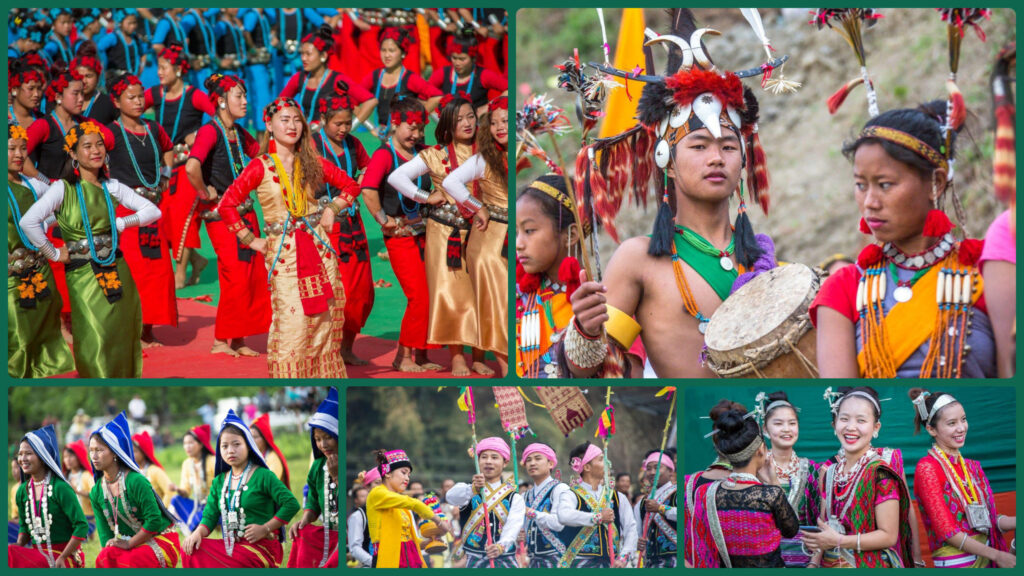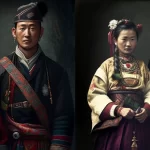Arunachal Pradesh, nestled in the northeastern corner of India, is renowned for its rich cultural heritage and vibrant traditional attire. The traditional dress of Arunachal Pradesh reflects the diversity and heritage of the region, serving as a symbol of ethnic identity and cultural pride. When visiting Arunachal Pradesh, one is likely to encounter both men and women adorned in these traditional garments, which reveal the unique stories and values of the local tribes. The traditional dresses not only provide a glimpse into the region’s cultural fabric but also highlight the distinctive features that separate men’s and women’s attire. Here’s an overview of the traditional dress of Arunachal Pradesh, focusing on both men’s and women’s clothing.
Traditional Dress of Arunachal Pradesh for Men
The traditional dress of Arunachal Pradesh for men is both functional and culturally significant. It comprises several elements, each with its own symbolic meaning and craftsmanship.
Gale (Headgear):
The Gale, or traditional headgear, is a distinctive feature of Arunachali men’s attire. Crafted from bamboo, cane, or locally sourced textiles, the Gale is more than just a piece of clothing—it is a cultural artifact. Its intricate patterns and designs signify the wearer’s tribal affiliations, societal status, and religious beliefs. The curvature and elaborate decoration of the Gale reflect the wearer’s cultural identity and social position. Each Gale is unique, showcasing the diverse tribal traditions and customs of Arunachal Pradesh.
Tingmai (Upper Garment):
The Tingmai is a sleeveless jacket that forms a crucial part of the traditional dress of Arunachal Pradesh for men. Made from handwoven fabric or animal skins, it serves both functional and cultural purposes. The Tingmai’s design and decoration are deeply rooted in the region’s craftsmanship and natural surroundings. Detailed animal, tribal, and environmental motifs adorn the Tingmai, highlighting the Arunachali people’s connection to nature. The beautiful beading, shells, and threads that embellish the Tingmai reflect the region’s artistic heritage.
Baku (Lower Garment):
The Baku, also known as Galey, is a traditional lower garment worn by Arunachali men. Made from handwoven cotton or wool, the Baku combines heritage with practicality. Its skirt-like wraparound design allows for flexibility and comfort, suitable for the region’s challenging terrain. The cotton belt secures the Baku at the waist and can be adjusted for a better fit. Beyond its utilitarian function, the Baku serves as a canvas for cultural expression, with patterns and colors that reflect tribal traditions and personal preferences.
Traditional Dress of Arunachal Pradesh for Women
The traditional dress of Arunachal Pradesh for women is characterized by its elaborate craftsmanship and cultural significance. These garments are a testament to the region’s rich heritage and artistic prowess.
Kong (Headgear):
The Kong is an essential part of the traditional attire for Arunachali women, much like it is for men. Made from bamboo, cane, or woven fibers, the Kong is a beautifully crafted headpiece that showcases cultural pride. The Kong’s design includes beads, feathers, and shells, each representing the wearer’s clan and individual style. The varying styles and decorations of the Kong reflect the cultural diversity of Arunachal Pradesh. Women proudly wear the Kong during festivals, celebrations, and everyday life, blending tradition with modernity.
Yameng (Upper Garment):
The Yameng is a long, sleeveless tunic or shirt worn by women in Arunachal Pradesh. Crafted from cotton or silk, it serves as both clothing and a medium for cultural expression. The Yameng is distinguished by its exquisite embellishments, including intricate stitching, mirror work, and lace designs. These decorations not only enhance the garment but also reflect the region’s cultural and artistic values. The colors and patterns of the Yameng, which often include floral, animal, and geometric designs, symbolize fertility, wealth, and cultural identity.
Pati (Lower Garment):
The Pati is a wrap-around skirt or curtain worn by women in Arunachal Pradesh. Handwoven and adorned with vibrant colors and intricate tribal motifs, the Pati is both practical and culturally rich. It is fastened around the waist with a cotton belt, allowing for ease of movement in various settings. The length and style of the Pati can vary among different tribes, reflecting the region’s diverse cultural landscape. The Pati’s bright colors and designs highlight the cultural complexity of Arunachal Pradesh.
Conclusion
In conclusion, the traditional dress of Arunachal Pradesh, for both men and women, is a vivid representation of the region’s cultural heritage and artistic expression. These garments are not just attire but are integral to the cultural celebrations and daily lives of the people. They encapsulate the essence of Arunachal Pradesh’s indigenous culture and continue to captivate those who encounter them. The traditional dress of Arunachal Pradesh stands as a testament to the region’s rich cultural tapestry, blending historical significance with contemporary relevance.


